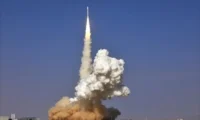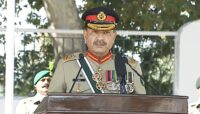Following its humiliating setback in Operation Sindoor, the Indian government appears to be doubling down on military expenditures in a bid to divert public attention from its failures. Prime Minister Narendra Modi’s administration is once again under fire for what critics are calling a politically motivated militarization campaign.
Despite the underwhelming performance of Rafale fighter jets, the Modi-led government has announced the procurement of 97 additional Tejas Mark 1A jets, as reported by The Economic Times. The deal, worth over ₹620 billion, raises the total number of Tejas Mark 1A aircraft ordered by the Indian Air Force to 180 units.
The report further states that these new jets will replace the aging MiG-21 fleet, which has long been criticized for safety and performance issues. During a recent visit to Spain, former Air Chief Marshal V.R. Chaudhary had hinted at the expansion of the Tejas program, including future plans to order 200 more Mark 2 aircraft and fifth-generation fighter jets from Hindustan Aeronautics Limited.
Moreover, India’s Defence Acquisition Council has approved additional acquisitions, including helicopters and upgrade packages for existing fighter jets, pushing military spending by another ₹160 billion.
However, critics argue that this aggressive defense buildup reflects less of a strategic necessity and more of a political cover-up. The failure of high-profile platforms like Rafale in real combat scenarios has sparked serious questions about the capabilities of India’s defense industry, despite decades of state-led investment.
“Tejas is not just an aircraft,” one analyst said, “it has become a symbol of Modi’s propaganda, overconfidence, and misplaced priorities.”
Observers point out that more than 65% of components in the Tejas aircraft are locally sourced — a point often celebrated in official narratives. Yet, the performance and combat-readiness of these aircraft remain under scrutiny, especially following India’s underperformance in recent skirmishes.






